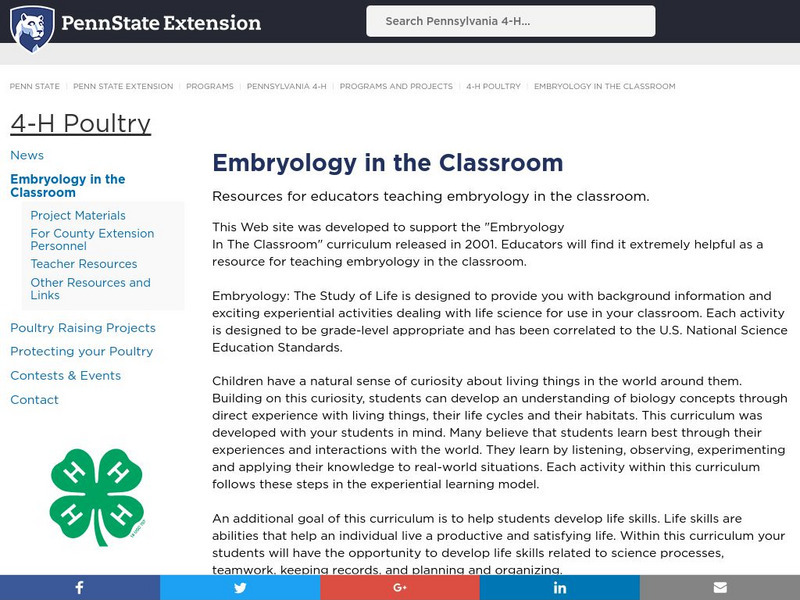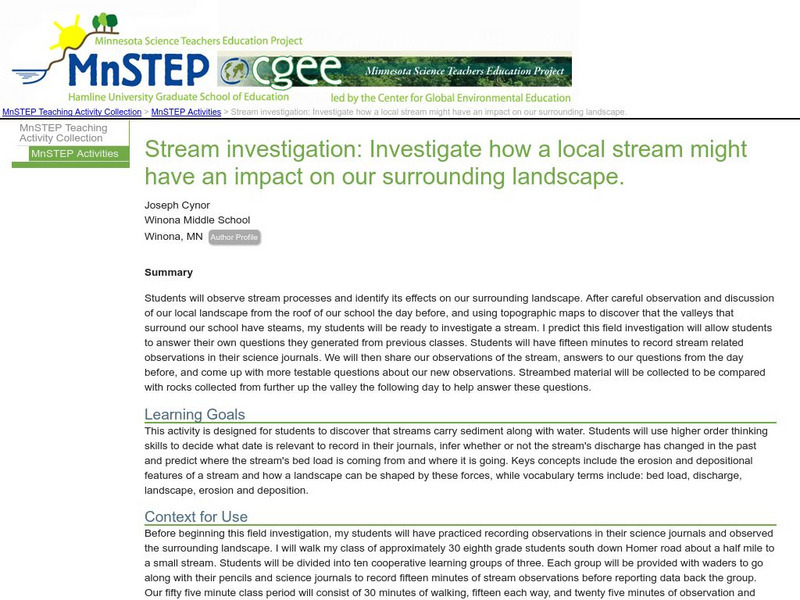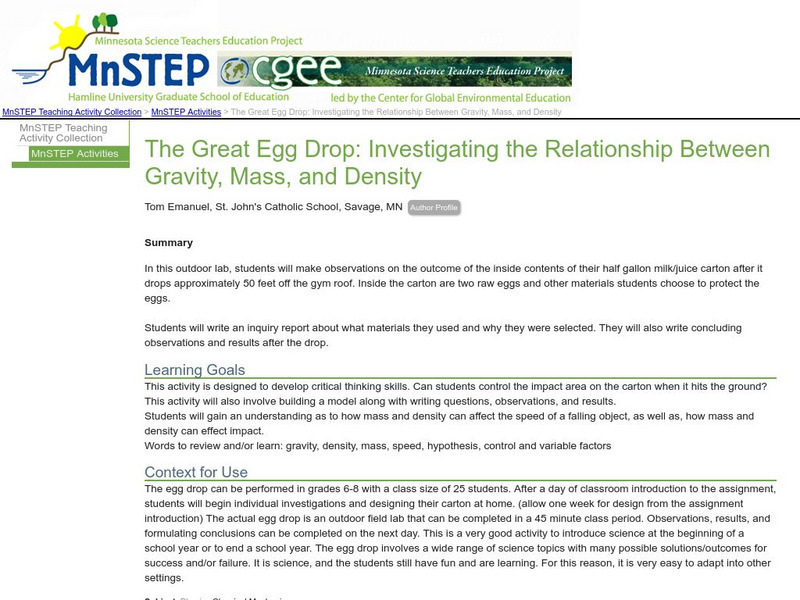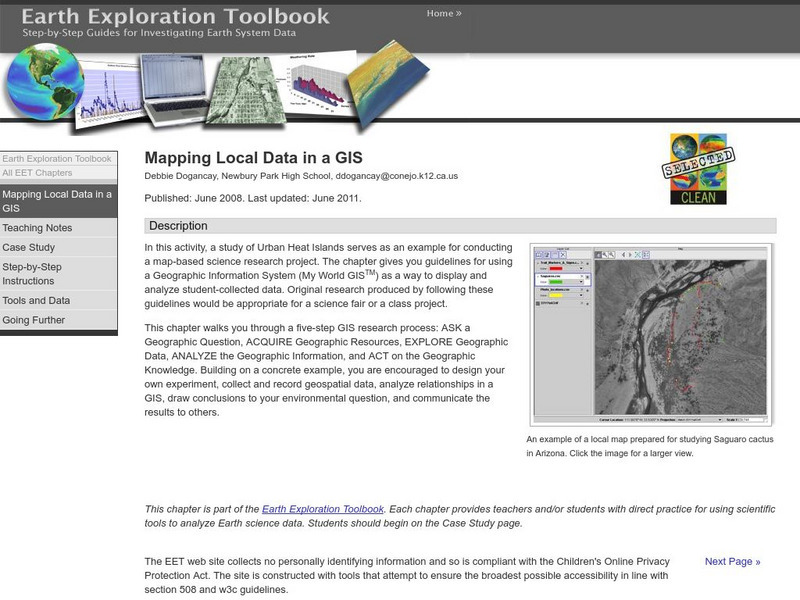Hi, what do you want to do?
Pennsylvania State University
Penn State University: Embryology in the Classroom
Come and learn more about how to incorporate embryology into your classroom. This site features tons of information about the embryology of chickens.
Alabama Learning Exchange
Alex: The Circles of Life
This is an inquiry based cooperative learning unit that can be used in biology as a graduation exam review or in botany for a nine week project. The learners will learn the life cycle of mosses, ferns, gymnosperms and angiosperms. The...
Alabama Learning Exchange
Alex: Using Primary Sources
This is an interdisciplinary inquiry-based lesson that focuses on critical thinking. Students are introduced to the true story of the first Thanksgiving with the reading of a NCSS Notable Trade Book Thanksgiving: The True Story. Working...
Alabama Learning Exchange
Alex: Souper Scooper
This hands-on, inquiry based lesson is an extension of the AMSTI Science Module, Solids and Liquids. Young scholars use nonstandard units to measure beans in a soup mix. Students predict how many beans will be in a scoop. Young scholars...
Alabama Learning Exchange
Alex: Light, Dry and Nutritious a Look at Dehydrated Food
This is a hands-on, inquiry-based activity that involves study and exploration of dehydration and dehydrated foods. Students are actively involved in using math and science skills.
California Institute of Technology
Infrared Zoo Lesson 3: The Invisible Zoo
How do biologists and zoologists use infrared technology to learn how warm and cold-blooded animals thermoregulate their internal body temperature? Have your students explore this phenomenon using this great lesson plan.
BSCS Science Learning
Bscs: A Medical Mystery
Learners are immersed in an online environment that challenges them to solve the medical mystery: "What's Wrong with M'Kenna?" This resource includes the complete middle school science curriculum unit, a teacher's guide, and an online...
Science Education Resource Center at Carleton College
Serc: Mn Step: Relative Dating Using "The Block"
This lesson involves an innovative strategy for introducing the concept of relative dating using a block of wood that has been painted, damaged, and nailed. The task for students is to analyze the order in which these events happened and...
Science Education Resource Center at Carleton College
Serc: Investigating Trees
In this investigation, students will record an observation (drawing) of a tree in their science notebook. Following the observation, students will discuss what they observed and a list will be created by the classroom teacher. Based on...
Science Education Resource Center at Carleton College
Serc: Mn Step: Stream Investigation
This is a field study where students investigate the characteristics and processes of local streams to see how they affect the landscape around them, and develop questions that could be investigated. They also collect rock samples from...
Science Education Resource Center at Carleton College
Serc: Mn Step: The Great Egg Drop: Relationship Between Gravity, Mass and Density
An interesting experiment in the relationship between gravity, density, and mass. Students must devise a way to drop a milk carton containing two raw eggs off a roof 50 feet high, without breaking the eggs. They then write a scientific...
Science Education Resource Center at Carleton College
Serc: Mapping Local Data in a Gis
In this activity, young scholars will learn how to conduct a map-based science research project using a Geographic Information System (GIS). They will design an experiment, collect and record geospatial data, analyze geospatial...
Alabama Learning Exchange
Alex: Where Did You Get Those "Jeans"?
This instructional activity can be interdisciplinary involving science, mathematics, and language arts. The primary nature of the instructional activity is inquiry, project, and technology-based. In science this project is a culminating...

















